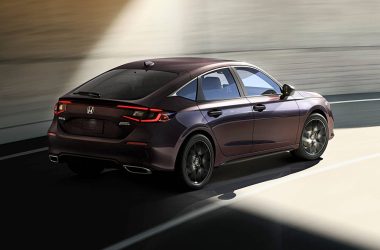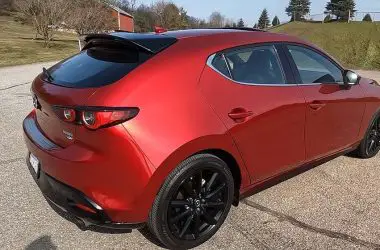The Mini Cooper is one of the most iconic small cars ever made. Its compact size, nimble handling, and retro-chic styling have endeared it to generations of drivers. But there has been some debate over whether the Mini Cooper qualifies as a true hatchback car.
By definition, a hatchback is a car with a rear door that opens upwards to access a cargo area that is integrated with the passenger compartment. Hatchbacks tend to be smaller cars that offer enhanced practicality and versatility over traditional sedans.
Looking at the design and dimensions of the Mini Cooper, there is a strong case to be made that it does fit within the hatchback category:
- The Mini Cooper has a rear liftgate door rather than a traditional trunk.
- The rear cargo space is fully connected to the main cabin for expanded carrying capacity.
- With a length of just over 12 feet, the Mini is one of the most compact cars on the market.
- The Mini boasts excellent maneuverability and parking ability thanks to its short overhangs and tight turning radius.
- The available cargo room with the rear seats folded is significant for a vehicle of its size.
So from a practicality standpoint, the Mini Cooper clearly shares many traits with other hatchback models. But there are some key differences that also set it apart:
The Mini Cooper’s Distinct Body Style
The original Mini had a fairly straightforward two-box shape with a nearly upright tailgate, but BMW’s modern redesign gave the new Mini Cooper a more complex, chopped body style. The front maintains an upright profile like the original Mini to maximize interior space.
But the rear takes on a more sloped, rounded liftback form for a sportier, more aggressive stance.
With its bold, curvy fenders, abstract geometry, and large front and rear overhangs, the Mini Cooper has a uniquely playful, cartoonish style. The short overall length coupled with the high roofline also exaggerates the boxiness of the original Mini design. For many admirers, it’s this funky, daredevil aesthetic of the new Mini Cooper that helps it stand out compared to the slender, sloped designs of many modern small cars.
The origins of the modern Mini Cooper’s distinctive body shape can be traced back to the Mini Concept design first shown in 1995. This concept was meant to showcase how an updated Mini could look by combining modern styling with classic Mini design cues. The positive response to this concept car helped guide BMW’s eventual production design, keeping signature elements like the round headlights, grille, and wheel arches.
Interestingly, BMW hired the same designer who penned the 1995 Concept to lead the Mini redesign project – Frank Stephenson. In crafting the production Mini Cooper’s unique shape, Stephenson drew inspiration from classic Minis competing at race events like the Monte Carlo rally. Those racing Minis had enlarged wheel arches and valences that formed the basis for the new Mini’s flared, muscular lower half.
The original production Mini Cooper that launched in 2001 came as a 3-door hatchback body style. A 2-door convertible soon followed in 2005, opening up the Mini to sun-loving drivers. But regardless of roof design, all Mini Coopers retain the iconic Mini look. For the 2014 model year refresh, the Mini added a 5-door hatchback variant with a longer wheelbase to create more cargo room and rear seat legroom while still maintaining a stubby, daring profile.
How the Mini Cooper Compares to Other Hatchbacks
The debate around whether the Mini Cooper qualifies as a hatchback often stems from its unconventional styling compared to more traditional compact hatchbacks. The Mini has a much more chopped, rounded shape than boxy subcompacts like the Honda Fit or Toyota Yaris. But when you look at the underlying hatchback design characteristics, the Mini checks all the boxes:
- Small, short overall length
- Sloping rear roofline and liftback for the rear cargo door
- Increased cargo capacity compared to a standard trunk
- Raised, upright seating positions
- Short rear overhang
The Mini may not look exactly like a stereotypical Honda Civic or Volkswagen Golf, but its hatchbacktraits are clear. In fact, its unusual shape gives the Mini Cooper added versatility to swallow more cargo than you might expect from such a small car. The Mini has around 38 cubic feet of total cargo volume. By contrast, the larger Honda Civic hatchback only has about 26 cubic feet of space.
The Mini’s cargo design also aligns with one of the core original purposes of hatchbacks – easy access to the storage area. Flip up the Mini’s rear hatch and the cargo floor sits nice and low. There’s no lip to lift heavy objects over, making it simple to load gear, groceries, or other bulky items.
One key difference, though, is the Mini’s rear hatch is quite a bit smaller than most economy hatchbacks. The short, sloped design does compromise the load opening a bit. So while the Mini holds plenty of cargo volume inside, you do lose a little bit of accessibility compared to a Honda Fit or Kia Rio with a more vertical hatchback design.
The Mini Cooper comes in 3-door and 5-door variants. The 3-door’s cargo hatch is very petite indeed. This forces you to maneuver objects in at an angle or remove obstructions first. The 5-door design opens up more space thanks to its longer body and increased rear overhang, making access easier. But even the 3-door Mini still offers the load floor utility of a hatchback.
In terms of driving experience, the Mini delivers the nimble, chuckable handling inherent to hatchbacks, allowing drivers to attack twisty backroads with confidence. The zippy turbocharged engines, short wheelbases, and firm suspensions live up to the Mini’s long racing history and British heritage. Just like other hatchbacks, the Mini prioritizes a fun, engaging ride over outright luxury.
How the Mini Cooper Differs from a Typical Hatchback
While the Mini Cooper ultimately qualifies as a hatchback, it does stand out from the norm with its distinctive size, styling, and premium features. Here are some of the key differences between the Mini Cooper and a mainstream compact hatchback like the Honda Civic:
- The Mini has a much shorter, stubbier overall length at just 151 inches for a 2-door model. The Civic stretches over 7 inches longer.
- The Mini is very rounded and sculpted with an exaggerated, cartoonish look. The Civic follows a traditional 5-door shape.
- The Mini comes standard with more premium materials and options like leather seats. The Civic starts simpler as an affordable economy car.
- The Mini provides peppy turbocharged engines while the Civic offers more choice including efficient non-turbos.
- The Mini has a higher baseline price starting over $22,000. The Civic starts under $20,000.
All those points illustrate the Mini’s upscale, retro-futuristic twist on the typical hatchback formula. As a BMW product, the Mini has always commanded a premium compared to other compact hatches. With its cartoonish figure, the Mini is definitely form over function. And its standard turbo power caters to a sportier audience than the average practical hatchback.
The Mini’s unusual qualities make it a crossover between a subcompact hatchback and a luxury product. Socategorization ultimately comes down to whether you prioritize the Mini’s size and basic hatchback underpinnings or its premium aspirations.





